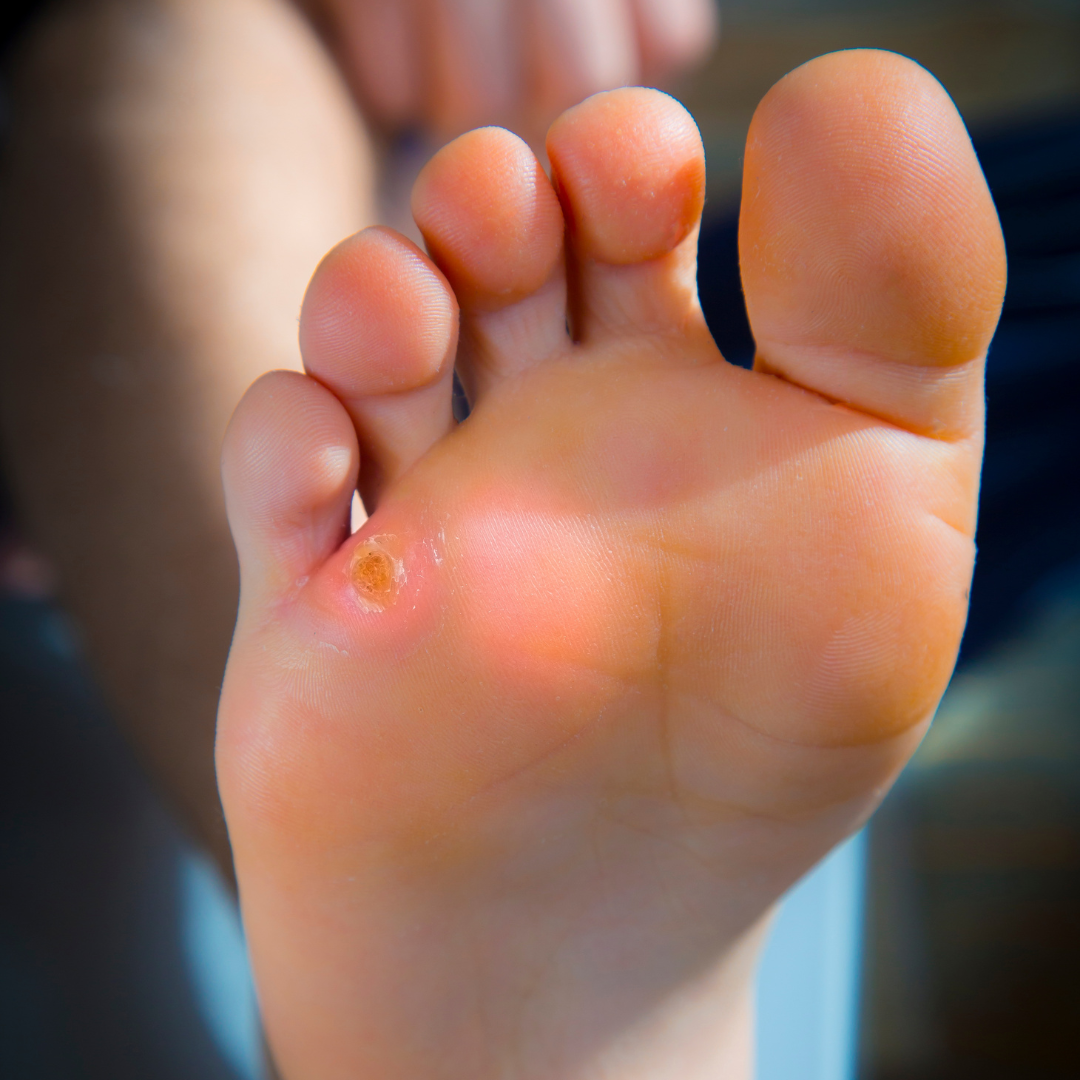If you have diabetes, you’ve probably heard of diabetic calluses. While they may seem harmless, these thickened areas of skin can pose serious health risks if left untreated. Dr. Herbst sheds light on why managing diabetic calluses is essential for your health and how professional treatment can help prevent complications.
What Are Diabetic Calluses?
Calluses develop because of pressure or friction on the feet. For individuals with diabetes, factors like poor circulation, neuropathy (reduced sensation), and foot deformities can make calluses more likely to form. Because diabetes affects how your body heals, even minor issues like calluses can escalate into more serious problems like ulcers or infections. Podiatry Associates of Florida works with our diabetic patients to ensure these types of calluses are treated properly, reducing risks that can cause more complications.
Why Should Diabetic Calluses Be Treated?
Neglecting diabetic calluses can lead to consequences that are far worse than discomfort. Here are some key reasons why you should prioritize treatment:
- Risk of Ulcers
Calluses often serve as a warning sign of excessive pressure or friction on certain areas of the foot. Without proper care, the skin beneath the callus can break down, leading to ulcers. Diabetic foot ulcers are not only painful but can result in severe infections and even amputation in extreme cases.
- Reduced Sensation Can Mask Problems
Diabetic neuropathy can diminish your ability to feel pain or discomfort. This means you may not notice when a callus has worsened or become infected. Regular monitoring is essential to catch issues early.
- Prevention Is Easier Than Cure
Treating a callus early is far simpler—and much more cost-effective—than managing complications like ulcers or infections.
How Dr. Herbst can help:
Seeking treatment from a podiatrist is one of the best steps you can take to protect your feet. Here’s how Dr. Herbst and Podiatry Associates of Florida can assist you:
- Safe Removal of Calluses
Many people are tempted to trim calluses at home using sharp objects like razors. This is extremely risky and can lead to cuts or infections, especially for diabetics. Dr. Herbst utilizes podiatric tools to safely and effectively remove calluses without harming your skin.
- Custom Care Plans
Dr. Herbst assesses the underlying cause of your calluses and develops a care plan tailored to your needs. This may include recommendations for proper footwear, orthotics, or pressure-relieving insoles to prevent callus recurrence.
- Regular Monitoring
Dr. Herbst keeps a close eye on your foot health through regular check-ups. This proactive approach enables us to identify and address any potential issues before they have more serious implications on your foot health.
- Guidance on Foot Care
Dr. Herbst can also guide you on daily foot care routines, such as moisturizing to prevent dryness and cracking, inspecting your feet for changes, and wearing the right socks and shoes to minimize pressure. In addition, and maybe most importantly, Dr. Herbst also helps patients with diabetic shoes or custom orthotics. Often, these are the perfect solution for diabetic patients who suffer from foot ailments related to diabetes.
Don’t Ignore the Warning Signs
The bottom line is this—diabetic calluses are not a cosmetic concern. They’re an indicator that your feet need attention and care. Left untreated, they can quickly lead to serious complications that may impact your mobility and overall health.
If you notice a callus forming or feel concerned about the health of your feet, reach out to a Dr. Bradley Herbst at Podiatry Associates of Florida, San Jose Boulevard. Taking a proactive approach to your foot health isn’t just about comfort—it’s about preserving your quality of life.
Call us today at 904-268-6993.

